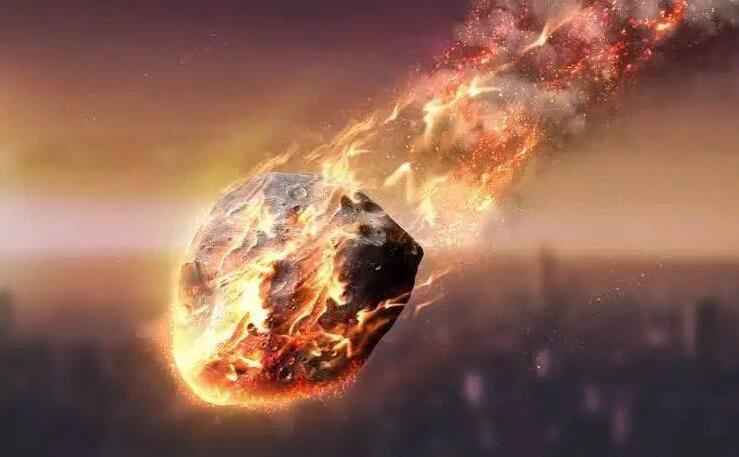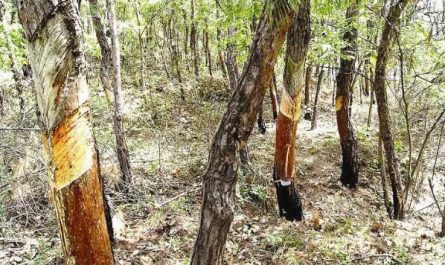In mid-January 1909, several researchers dragged hundreds of kilograms of supplies against the piercing cold wind of Antarctica. On the way, they were faced with dangerous ice cracks. They traveled more than 1,000 kilometers. Due to the harsh environment, Unable to use transportation, they had to travel on foot to determine the location of the Earth’s magnetic south pole. Douglas Mawson and Edgeworth David in the research team spent decades exploring the mysterious Antarctic region, the hidden meteorites or The mystery of the origin of the earth will be revealed.
A century later, scientific research in Antarctica is still facing severe challenges. Although the natural conditions in Antarctica are harsh and the surface is barren, the mystery of the origin of the earth can be discovered through survey and analysis of meteorites. Every year, scientists from the Smithsonian Institution collect hundreds of meteorites from Antarctica. , They will reveal the specific details of the origin of the earth and the solar system.
In 1969, Japanese glaciologists working in Antarctica discovered 7 meteorites and believed that they were from different meteorites. Then there was a boom in Antarctic meteorite search. 7 years later, researchers from Japan and the United States organized a joint Mission, expect to find more Antarctic meteorite samples. Soon the meteorite search activity became an annual survey activity. More than 40 years later, American scientists have collected about 23,000 meteorites from Antarctica. This accounts for 90-95% of the single specimens in the US National Meteorite Collection. Collection and custody of the Sunny National Museum of Natural History.
Why are meteorites in Antarctica worthy of research?
Antarctica is the coldest and driest area on earth. It forms a natural freezer that can preserve the meteorite. Once the meteorite freezes into ice, the movement of glaciers will bring it from the North Pole to the coast of Antarctica.
Tim McCoy, curator of the Meteorite Museum at the Smithsonian’s National Museum of History, said: “The ice in Antarctica is like a natural conveyor belt. When the ice hits the trans-Antarctic mountains, it tries to cross the mountains. The strong wind blows the ice. In the end only the surface rocks are left.”
Every November, there will always be some scientists crossing the plateau south of the Trans-Antarctic Mountains and collecting meteorite samples in about 6 weeks. The researchers will not face the same difficulties as the first Antarctic explorers, but they It is not without obstacles. It is reported that about one-quarter to one-third of the time each year is proved to be unsuitable for survey work. Due to the high-speed cold wind and very poor light, the Antarctic ground is very desolate and barren, with white everywhere A vast expanse.
At the same time, the research team is also facing psychological challenges. Sometimes, Antarctica feels more isolated and helpless than space. Some astronauts use Antarctica’s environmental characteristics to conduct psychological training to prepare for the future arrival of the International Space Station.
Carrie Corrigan, a research geologist at the Smithsonian Institution, said: “All the astronauts who have worked with us say that Antarctica is like the International Space Station. I have been to Antarctica to collect meteorite samples twice, but at the International Space Station. They are in constant contact with the mission control center, and we make a call every day to tell the base that we are all well.”
In a few weeks, scientists have collected hundreds of meteorites, ranging in size from M&M beans to footballs, but most meteorites are fist-sized. Scientists must first determine whether they are meteorites or rocks on the earth. The meteorite below has a thin and dark coating-“melt crust”.
Corrigan said: “When a meteorite passes through the atmosphere, the surface of the meteorite will melt due to the high temperature of the outside world. If the meteorite passes through the atmosphere and does not burn out, it will fall to the ground. Form a layer of melted crust.”
What do scientists use meteorites for?
Scientists freeze the collected meteorites and then transport them from the wild to NASA’s Johnson Space Center in Houston, Texas. Researchers at the space center defrost the meteorite samples and extract a small amount of them for delivery. The Smithsonian conducts chemical analysis.
Corrigan said: “In the end, other researchers came to us. We are the’long-term guardians’ of meteorites. After the researchers classified the meteorite samples, they stored them in a building outside the museum to prevent corrosion, weathering or mining. The material is leached, and meteorite samples are stored in boxes filled with nitrogen.”
He also pointed out that usually people use liquid nitrogen to keep materials frozen, while we use dry nitrogen to prevent meteorite samples from being exposed to water and other materials in the atmosphere. In fact, Antarctic meteorites are not like falling meteorites in other regions with organic matter around them, so they provide an unpolluted snapshot of the solar system’s formation.
McCoy said: “The earth continues to be in a state of weathering, volcanic activity and plate movement destroy the earth’s rocks, and the relevant historical traces of 500 million years after the formation of the earth have disappeared. Most meteorites from the asteroid belt of the solar system can be traced back to 40 100 million years ago, so if we want to understand the first 500 million years of the solar system’s history, only meteorites can obtain important evidence.”
What can meteorites tell us?
Geologists estimate that 99% of the meteorite samples collected in the Antarctic region are from the asteroid belt of the solar system, while less than 1% are from the moon and Mars. Most meteorites are chondrites, which are small types of meteorites called chondrites. Non-metallic meteorites composed of particles, some of which contain chondrules of mineral fragments from before the formation of the solar system.
Corrigan said: “These mineral fragments before the formation of the solar system are called presolar particles. We think they came from a star that exploded nearby when the solar nebula was just formed. One of the chondrites is called carbonaceous chondrites. Scientists believe that the water it contains may have formed the earth’s oceans.”
McCoy said: “We think they come from a kind of asteroid called C-type asteroid. Not long ago, NASA’s OSIRIS Rex mission surveyed the Bennu asteroid. Scientists designed and implemented this multi-year mission, partly to find the ocean. And the types of hydrous minerals of life on earth.”
The other meteorites collected are iron cores. Researchers can use it to study how planets are formed. McCoy said: “This is a very interesting question. We will launch a space called Psyche in 2022. Mission, we will visit the stripped iron cores of ancient asteroids that we think may be floating in space.”
The meteorite samples collected in Antarctica inspired and guided these space missions, and also helped scientists analyze the returned material. With the collection and research of each new meteorite, scientists will reveal the mystery of the earth’s origin and important clues to the evolution of the early stages of the solar system. .
McCoy said: “In fact, we have landed on the moon and deployed multiple rover surveys on the surface of Mars. At the same time, we have discovered these valuable meteorite samples in Antarctica. This relatively modest project is huge. The degree determines what kind of solar system mystery we will reveal.”






